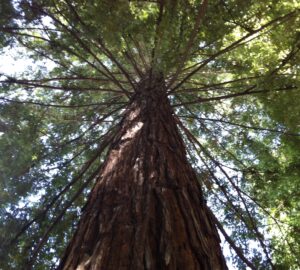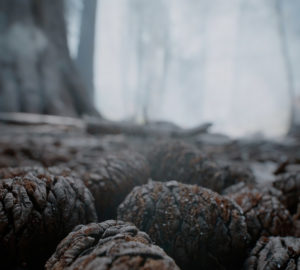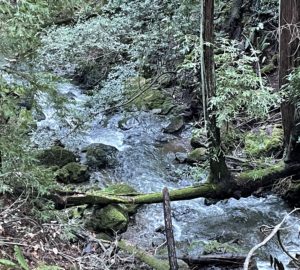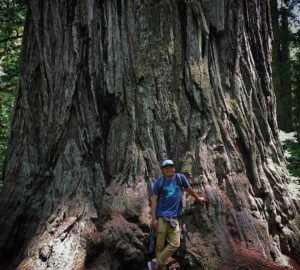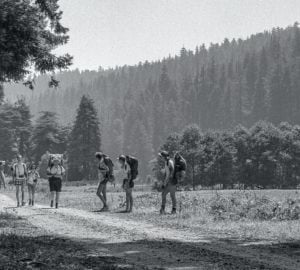Humans have walked through the redwood forest for millennia, but we first journeyed into the redwood canopy mere decades ago. Recent advances in climbing technology now enable canopy researchers to safely access the highest reaches of the redwood tree tops without damaging the trees. With new rope access to the canopy has come a multitude of discoveries and more happen every year.
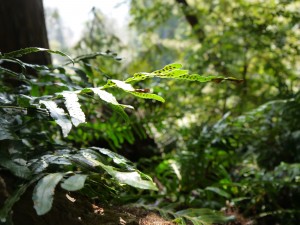
One of the most interesting canopy discoveries so far was made by Professor Stephen Sillett and his colleagues from Humboldt State University. They found that a single coast redwood tree can hold more than 575 pounds (dry weight) of the fern Polypodium scouleri which grows as an epiphyte on top of redwood branches. This fern, also commonly called leather fern, helps soil accumulate in the canopy and as much as 5,200 pounds of soil has been found in one redwood crown.
The ferns help anchor an entire ecosystem hundreds of feet above the forest floor and create a rich environment for insects, earthworms, salamanders, and other plants to thrive. Every time a redwood tree is climbed by biologists, we wonder what plants and animals might be discovered.
On March 28-29, 2014, Professor Stephen Sillett and Marie Antoine will climb the redwoods at Muir Woods National Monument for the first time as part of a massive Bioblitz to identify and celebrate living things within the Golden Gate National Recreation Area. We will keep you updated on what canopy discoveries are made during the event and in the mean time, learn more about the Bioblitz here.

